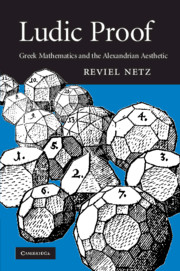Conclusions and qualifications
Published online by Cambridge University Press: 29 July 2009
Summary
The overall structure of the argument is simple. First, we have covered, in the first three chapters of this book, a substantial body of evidence pointing to a certain style of Hellenistic mathematics. Its three major constituents are: (1) mosaic composition, (2) narrative surprise, (3) generic experimentation (a more specialized phenomenon is that of the carnival of calculation). Second, we have briefly noted, in chapter 4, how such stylistic features may also be typical of the major literary works of the same period (with the carnival of calculation paralleled by the carnival of erudition). The minimal claim of the book, then – the one backed up by evidence – is of a certain homology of style between the exact sciences and poetry in the Hellenistic world. In the conclusion to the preceding chapter I have already pointed beyond, to much more tentative claims. It is tempting to postulate a historical force underlying the homology. More than this: if indeed we suggest that a certain historical process led to a Hellenistic interest in generic experimentation, then it becomes very tempting to suggest that the rise of the exact sciences as a major cultural phenomenon should be seen as part and parcel of this practice of experiment in genre, where a hitherto minor genre suddenly gains in prominence.
All of this, however, is highly tentative, largely because our evidence can support such historical interpretations only with difficulty. In this section I acknowledge and address the limitations imposed by our evidence.
- Type
- Chapter
- Information
- Ludic ProofGreek Mathematics and the Alexandrian Aesthetic, pp. 230 - 241Publisher: Cambridge University PressPrint publication year: 2009



